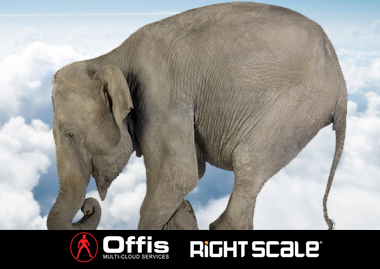RightScale Environment Provisioning Automation
Brad: So you're aware of the environment provisioning automation project that we're doing with one of our large clients at the moment, where we're literally taking over a hundred applications, a complex environment, and being able to, with a push of a button, provision that into either a private cloud or a public cloud. To what extent are we seeing that sort of use case in the market?
Bailey: I think what's interesting about this project is the all-in nature of it. A lot of adoption cycles, as we talked about earlier, start with dev/test, put your toe in the water, make sure it works, and then evolve from there into CI/CD. I think, obviously, they had to have done some toe-in-the-water-like experimentation to get to the point where they are. But clearly, your team has done a great job of bringing them very fast from, "Hey, we think there's an opportunity for us in this cloud world to improve our agility," right? That's ultimately what it's about. To saying, "It's actually so good that we're going to pretty much put the whole company and all our assets from a software and IT perspective into a cloud model."
So I think it's unique in the context of how you've actually done it. It's not unique in the context of people's desire. There are a lot of companies that will say, "We're all in on cloud, and we're cloud first across the board." Actually delivering on that, once they get into the trenches, becomes a much more difficult challenge. And it relates to what we were talking about earlier with regards to where is Australia in the adoption cycle of cloud. Many businesses out of the US that I've worked with directly have been all-in on cloud for years, and they're still not there. I think in part, their appetite was larger than their ability to execute.
If you're a CIO right now, it's a difficult circumstance. I would argue it's probably harder now than it ever has been, because your ability to control the assets you're responsible for is completely different than it was 10 years ago. As a CIO, you used to build a data center. You might have outsourced providers and contractors working on it but ultimately, you owned the outcome of that solution. In a hybrid cloud ecosystem, your ownership and the way it gets delivered is vastly different than it used to be. You're going to be relying on not a handful of vendors, not on dozens of technologies, but hundreds of technologies in this ecosystem. And so you really have to challenge your own organizations and their thought process to move away from controlling every outcome to actually dealing with a massively heterogeneous environment that's just exploded. It's not going to get any simpler in the next five years. It's going to get more complex.
Brad: I completely agree. The complexity is rising. And that's probably a really good segue into a question around where I see one of the real strengths of RightScale is governance in a multi-cloud environment.
Bailey: Years ago, we were very focused on this thing called a server template and making a virtual machine a SQL Server or a MySQL server. And I think we have forked on an early version of Chef. We did a ton of work with bash scripts and PowerShell and configuration management approaches. That's now an industry unto itself. You know you have Salt, Ansible, Chef, Puppet. Back then, it was Puppet and that was it. Chef was a brand-new player in the block. So we've extracted our platform further away from having an opinion about how something becomes a SQL Server. You can serve and use RightScale. You can use as Ansible, Salt, Chef, whatever. We happen to use Chef...and much more into caring about the overall continuum and the governance factors that you described.
So the way I like to think about RightScale and how we've started marketing it is this concept of Universal Cloud Management, from Bare Metal to Containers and everything in between, provisioning Platform-as-a-Service. It's really the ecosystem you're operating within and then you add to that self-service, plug-ins, and all the other services out there that you may want to interact with. I think we've hit a good sweet spot in the market that we can build more and more capability on.















